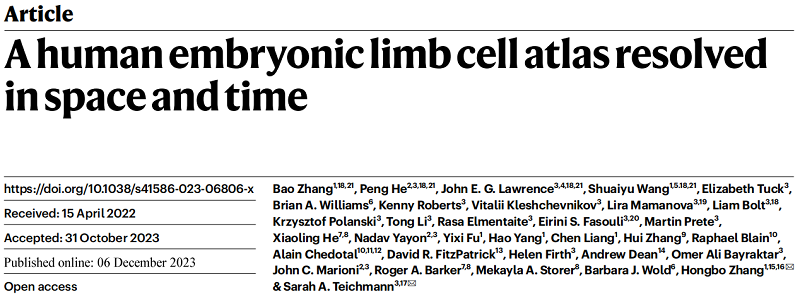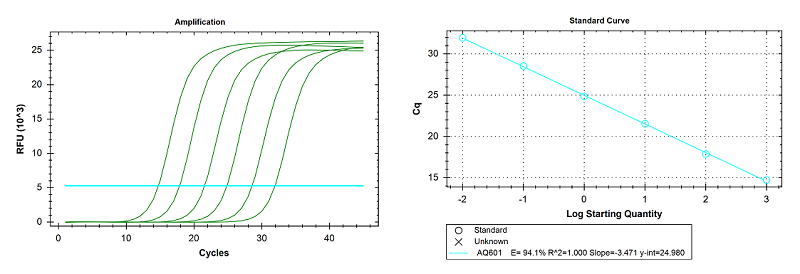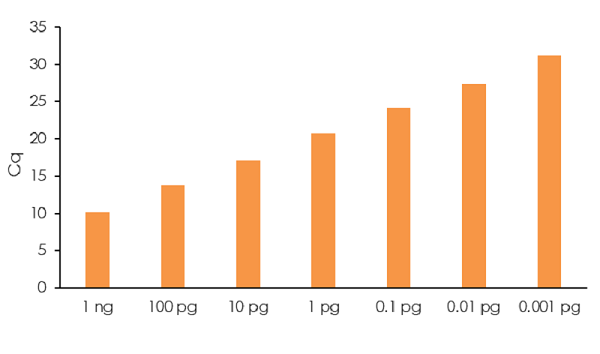Article information
Article title: A human embryonic limb cell atlas resolved in space and time
Journal: Nature
Date of Publication: December 6, 2023
Article link: https://www.nature.com/articles/s41586-023-06806-x
Using TransGen products:
PerfectStart® Green qPCR SuperMix (AQ601)

Abstract
Human limbs emerge during the fourth post-conception week as mesenchymal buds, which develop into fully formed limbs over the subsequent months. This process is orchestrated by numerous temporally and spatially restricted gene expression programmes, making congenital alterations in phenotype common. Decades of work with model organisms have defined the fundamental mechanisms underlying vertebrate limb development, but an in-depth characterization of this process in humans has yet to be performed. Here we detail human embryonic limb development across space and time using single-cell and spatial transcriptomics. We demonstrate extensive diversification of cells from a few multipotent progenitors to myriad differentiated cell states, including several novel cell populations. We uncover two waves of human muscle development, each characterized by different cell states regulated by separate gene expression programmes, and identify musculin (MSC) as a key transcriptional repressor maintaining muscle stem cell identity. Through assembly of multiple anatomically continuous spatial transcriptomic samples using VisiumStitcher, we map cells across a sagittal section of a whole fetal hindlimb. We reveal a clear anatomical segregation between genes linked to brachydactyly and polysyndactyly, and uncover transcriptionally and spatially distinct populations of the mesenchyme in the autopod. Finally, we perform single-cell RNA sequencing on mouse embryonic limbs to facilitate cross-species developmental comparison, finding substantial homology between the two species.
Discussion
Our developmental limb atlas combines single-cell and spatial transcriptomics to form the first detailed characterization of human limb development across space and time, identifying and placing 67 clusters of cells into anatomical context76. In doing so, we uncovered several new cell states. We identified neural fibroblasts surrounding the sciatic nerve and two clusters in the tendon lineage mapped to the tendon and perimysium. In the autopod, we described three clusters of cells with subtly different transcriptomes mapped to distinct regions: distal (LHX2+MSX1+SP9+), RDH10+distal (RDH10+LHX2+MSX1+) and transitional (IRX1+MSX1+) mesenchyme. Through spatial transcriptomic analysis of the foot plate, we connected physiological gene expression patterns to genetic conditions with a digit phenotype, demonstrating the clinical relevance of developmental cell atlas projects. Our study also presents a refined model of the overlapping processes of primary and secondary myogenesis in the limb, while identifying and validating MSC as a key player in muscle stem cell maintenance. We further maximized the utility of this study by presenting an integrated cross-species atlas with unified annotations. It is important to acknowledge that our findings are limited by the lack of earliest-stage limb samples, the 3′ end bias of our transcriptomic assays, differences in cell-type coverages between scRNA-seq and spatial transcriptomics, as well as the low spatial resolution of spatial transcriptomics (see Supplementary Information). In summary, our work presents one of the first cell atlases of an entire human embryonic tissue, presents detailed spatiotemporal models of its development and provides rich resources for single-cell, spatial and developmental biology communities.
TransGen Product Support
High-quality reagents are a powerful tool for scientific research. PerfectStart® Green qPCR SuperMix (AQ601) contributed to this study.
PerfectStart® Green qPCR SuperMix (AQ601)
Features
• Blocking by 3 antibodies; high specificity, sensitivity and amplification efficiency; applicable to a wide range of species.
• Dual-cation buffer enhances specificity and reduces primer-dimer formation.
• Universal Passive Reference Dye for different instruments to correct differences in fluorescence detection between wells due to pipetting errors.
Experimental Data:
Ø High amplification efficiency
Amplification curve and standard curve obtained by amplification using gradient diluted plasmid DNA (10 ng ~ 0.1 pg, 10-fold dilution) as template. The results show that TransGen products have high amplification efficiency and can obtain beautiful amplification curves and standard curves.

Ø High amplification sensitivity
Use 1 ng of serially diluted plasmid DNA as a template and use TransGen products for amplification. The results show that TransGen products have high amplification sensitivity.

TransGen products have once again been published in the Science journal, which proves customer's recognition of the quality and strength of the TransGen products, and also perfectly interprets the principle of " Quality is the highest priority. To serve the customers with superior quality and service. " that the TransGen has always adhered to. TransGen has always been on the road of helping scientific research, and hopes to work side by side with more scientific researchers in the future and continue to help scientific research with more and better products.
Some articles published using the PerfectStart® Green qPCR SuperMix (AQ601):
• Zhang B, He P, John E.G. Lawrence, et al. A human embryonic limb cell atlas resolved in space and time [J]. Nature, 2023.
• Huang J, Wu C, Kloeber J A, et al. SLFN5-mediated chromatin dynamics sculpt higher-order DNA repair topology[J]. Molecular Cell, 2023.
• Liang Y, Wang J, Xu C, et al. Remodeling Collagen Microenvironment in Liver Using a Biomimetic Nano‐Regulator for Reversal of Liver Fibrosis[J]. Advanced Science, 2023.
• Liang Y, Zhang J, Xu C, et al. Biomimetic Mineralized CRISPR/Cas RNA Nanoparticles for Efficient Tumor-Specific Multiplex Gene Editing[J]. ACS nano, 2023.
• He F, Liu Z, Xu J, et al. Black phosphorus nanosheets suppress oxidative damage of stem cells for improved neurological recovery[J]. Chemical Engineering Journal, 2023.
• He F, Cheng K, Qi J, et al. Black phosphorus nanosheets enhance differentiation of neural progenitor cells for improved treatment in spinal cord injury[J]. Chemical Engineering Journal, 2023.
• Cui B, Guo X, Zhou W, et al. Exercise alleviates neovascular age-related macular degeneration by inhibiting AIM2 inflammasome in myeloid cells[J]. Metabolism, 2023.
• Deng P, Wang Z, Chen J, et al. RAD21 amplification epigenetically suppresses interferon signaling to promote immune evasion in ovarian cancer[J]. The Journal of Clinical Investigation, 2022.
• Li W, Ali T, Zheng C, et al. Anti-depressive-like behaviors of APN KO mice involve Trkb/BDNF signaling related neuroinflammatory changes[J]. Molecular Psychiatry, 2022.









